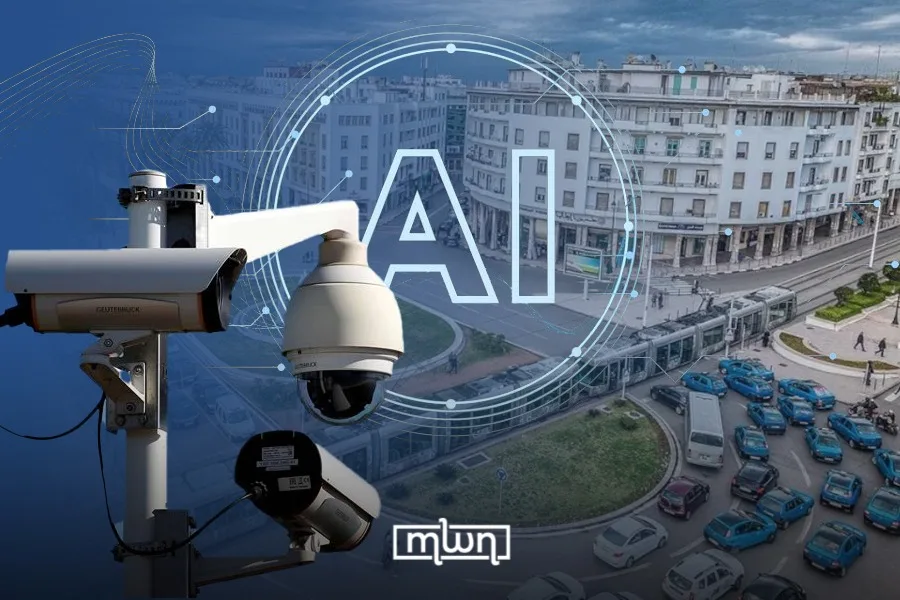Until the end of 2025, Doha-division will set up an advanced surveillance system with 4,000 AI-driven cameras with facial recognition functions. With a budget, which is estimated to be 108 million ($ 10.8 million), the ambitious project aims to convert the capital into an intelligent, safe city through technical technology.
According to official documents, the project was divided into two different components. The first focuses on the construction of command centers and data infrastructures and was awarded to the Finatech Group under the direction of CEO and founder Omar Lataoui for MAD 34.79 million (3.48 million US dollars).
The second, a larger component with the actual installation of the surveillance system, went to the Alomra Group International under the direction of President and founder Driss Benomar for MAD 73.82 million ($ 7.38 million).
The surveillance network will contain several advanced camera types, including Panorama cameras (Panorama Pan-Tilt-Zoom), facial recognition cameras and long-distance monitoring devices. These are strategically positioned in Rabat’s public spaces to ensure comprehensive coverage.
The cameras will be equipped with the ALPR technology (Automatic Nicy Spalwig (ALPR) and artificial intelligence skills This can analyze behavior patterns in real time.
The schedules for implementation are tight, with the first component within 5 months and the second within 6 months will be completed, which is ready for operation before the end of the year.
Two main command centers are set up to centralize the monitoring processes, which are supported by state -of -the -art data centers that were developed according to international standards.
Why now?
According to Anas Abou El Kalam, head of the cyber security department of Cadi Ayyad University, the time of this implementation is no coincidence. “This project comes as a Morocco prepared In order to organize important international sporting, cultural, political and scientific events, mainly the Africa Cup of Nations 2025 and the FIFA World Championship 2030, ”he told Morocco World News (MWN).
Abou El Kalam emphasized that the project aligns with increasing cross -border security threats. “It coincides with increasing terrorist threats and security risks that exceed the limits that makes it necessary to establish an integrated digital security system that is able to” protect “for early detection and quick, effective intervention to protect visitors, visitors and important facilities, he developed.
“The Moroccan government takes into account investments in these technologies An integral part Abou El Kalam explained from his 2030 vision, including the digital strategy 2030.
The Rabat project only represents the first phase of a more ambitious national plan. “This is only the first phase of an ambitious national plan that gradually expands the intelligent surveillance system to other major cities such as Casablanca, Tanger, Marrakech and Agadir, in particular with the approach of the most important sports and tourism events”, detailed Abou El Kalam.
Abdelmajid Charrass, extraordinary professor at Sultan Moulay Slimane University, said MWN: If he is successful in Rabat, the system could be expanded to other cities such as Casablanca, Marrakech and Tangier. “
However, he warned that such an expansion is confronted with several challenges, including “high costs for the establishment of a comprehensive surveillance system in several cities, the need for a strong infrastructure and legal preparations for the protection of the private sphere of citizens”.
Abou El Kalam continued to talk about the technical complexity and found the massive data volume (big data) generated by thousands of cameras, the need for digital infrastructure, which are able to secure communication between distributed surveillance centers in real -time storage and processing and networking.
Security break
The new Surveillance system promises immense security advantages through its advanced skills. With the facial recognition function, cameras can record the facial features and compare them with safety databases so that the authorities can identify interests within seconds.
The system uses deep -learning algorithms that recognize suspicious behavior patterns and can automatically mark unusual activities in overcrowded areas. This ability is an upgrade of traditional surveillance, which is based exclusively on human surveillance.
“This project marks a significant step forward in modernizing urban security management through technology and strengthens the position of Rabat as a progressive city,” Charrass told MWN.
He pointed out how the system would improve traffic management by “pursuing vehicle movements, identifying traffic violations and optimizing the flow of traffic”.
Abou El Kalam noticed that similar systems have effective internationally. “London was one of the first cities to have a wide network of smart cameras income that effectively contributed to thwarting several terrorist operations and serious crimes,” he said.
“Singapore uses an intelligent surveillance system that analyzes movements of individuals and vehicles and recognizes suspicious behaviors in real time,” added the cyber security expert. “China has implemented one of the world’s largest networks for facial recognition networks that monitors millions of people and combat crime.”
The provision includes a fiber optic network infrastructure and CAT 6A cabling to ensure the high-speed data transmission between cameras and control centers. AI equipped servers immediately process video feeds and enable real-time analyzes and facial adjustments against databases.
The system is supplied with all data in a central operating room in which security experts analyze information and make immediate decisions based on more precise available data. This approach aims to drastically reduce the response times to security incidents and traffic violations.
Privacy battlefield
As with every big leap into security innovations, the implementation of such advanced surveillance technology is associated with profound data protection concerns. “The introduction of Smart Surveillance Systems has triggered a debate about its effects on privacy and individual freedoms,” warned Charrass.
In order to clear up these concerns, he emphasized the need for “transparency in system operation so that citizens understand how it works and their intended purpose”, and “monitoring the use of technology to prevent them from being exploited for restrictions on freedom or illegal purposes”.
Abou El Kalam claimed that such projects improve security for the citizens and increase the speed of security interventions, “the use of this technology inevitably means that massive data must be framed by law and technically, otherwise these systems become tools for excessive monitoring and limitation of individual freedom.”
He outlined several necessary protective measures: “Clear and strict laws on the recording, storage and use of personal data with defined responsibilities and accountability for violations.”
Best practices for such systems usually include strict guidelines for database, in which the film material is automatically deleted after a given period, provided that this is not marked for examination. Public spaces should include visible notifications about the monitoring of the camera, and citizens should have channels that can inquire about the data acquisition practices.
He warned the need for supervision and explained: “The national commission for the control of the protection of personal data must be included in the project monitoring; the system of independent supervision by human rights authorities, associations and judicial authorities is subject; introduction of encryption techniques and limitation of data services.”
Cybersecurity Challenge
Charrass raised a red flag over the impressive challenge that Cyber security Poses. “With the progress of technology, also cybercrime that makes surveillance systems susceptible to hacking or technical errors,” he warned.
Security experts forwarn that systems such as these goals could be for sophisticated cyber attacks that aim to access sensitive data or to disrupt safety processes. The protective measures typically include end-to-end encryption, segmented network architecture and continuous susceptibility reviews.
He hammered home how important it is to “secure data against cyber attacks that could lead to information Violations“And” carry out regular security audits to ensure the resistance of the system against digital threats. “
The centralization of surveillance data refers to the security experts as a “honeypot” – an attractive goal for hackers. Advanced intrusion detection systems and 24/7 monitoring of the safety infrastructure itself are of essential importance for maintaining data integrity.
The success of the project ultimately depends on achieving the right balance between security and data protection protection. When Morocco progresses on his digital transformation trip, according to Charrass, it takes an urgent question: “How can you make sure that the technology is used responsibly and fairly?”





